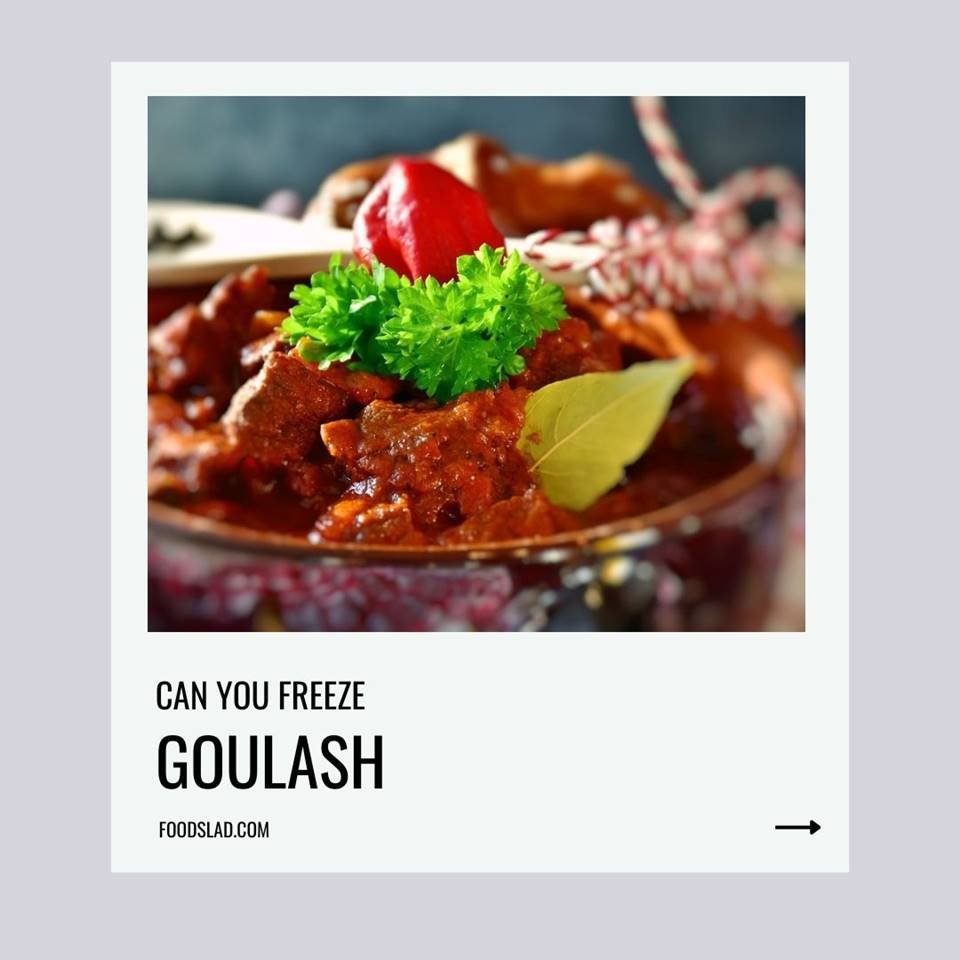Goulash, a dish hailing from Hungary, is a culinary masterpiece that combines tender meat, aromatic spices, and rich sauces. But can you freeze goulash after it’s cooked, and will it retain its magic upon thawing? Let’s delve into the world of goulash preservation.

Can you freeze goulash?
Yes, you can freeze goulash. Freezing goulash is not only possible but can also be a lifesaver for busy individuals or meal preppers. The process involves cooling the goulash, transferring it to a freezer-safe container, and sealing it tightly to prevent freezer burn.
Goulash’s active ingredients, like meat, vegetables, and sauces, make it ideal for freezing. Unlike delicate foods that might lose their texture, goulash’s robust nature ensures it holds up well in the freezer.
Can You Freeze Goulash with Pasta?
What about goulash variants that include pasta? The answer is a resounding yes! Pasta goulash can be successfully frozen, but there are a few considerations. Cook the pasta slightly less than al dente before adding it to the goulash, as it will continue to cook during reheating. Once the goulash cools down, combine it with the pasta and follow the freezing procedure.
Goulash with Rice: To Freeze or Not to Freeze?
When it comes to freezing goulash with rice, a similar principle applies. Prepare the rice a tad undercooked and mix it into the goulash before freezing. Upon reheating, the rice will soak up the flavorful goulash juices, ensuring a delightful taste experience.
How Long Does Goulash Last in the Freezer?
Goulash, when adequately frozen and stored, can last in the freezer for up to 3 months. To ensure the best quality, consume it within this timeframe. After three months, the flavors might begin to degrade, affecting the overall taste and texture.
Can You Freeze Goulash with Sour Cream?
Creamy goulash variations with sour cream might raise eyebrows, but fear not! You can freeze goulash with sour cream, but it requires a bit of finesse. Add the sour cream during the reheating stage to prevent curdling and separation. This way, you’ll enjoy the lusciousness of creamy goulash even after freezing.
Freezing Goulash: Step-by-Step Guide –
- Allow the goulash to cool down slightly.
- Portion the goulash into freezer-safe containers, leaving some space for expansion.
- Seal the containers tightly and label them with the date.
- Place the containers in the coldest part of the freezer.
- When reheating, ensure the goulash reaches a safe internal temperature.
Thawing Goulash with Grace –
When the time comes to savor your frozen goulash, the key is to thaw it gradually. Move the container from the freezer to the refrigerator and allow it to thaw for several hours or overnight. Avoid using the microwave to defrost, as this can result in uneven thawing and potentially compromise the texture.
Freshening Up Thawed Goulash –
After thawing, you might notice a slight change in the goulash’s texture. A quick fix involves gently reheating it on the stove over low heat. This process will help redistribute the flavors and restore the dish to its original glory.
Freezing Goulash: Dos and Don’ts –
- Do use high-quality freezer-safe containers to prevent freezer burn.
- Do label containers with the date of freezing to keep track.
- Do cool the goulash before freezing to maintain its quality.
- Don’t freeze goulash that has been previously frozen and thawed.
- Don’t freeze goulash with excessive water content, as it might become mushy.
- Repurposing Frozen Goulash: The Culinary Odyssey
The versatility of frozen goulash shines when you consider the various ways to repurpose it. Transform it into a filling for savory pies, serve it over polenta or mashed potatoes, or stuff it into bell peppers for a unique twist.
Elevating Frozen Goulash –
Adding a handful of fresh herbs or a splash of wine can elevate the flavors of thawed goulash. A sprinkle of grated cheese or a dollop of yogurt can add an extra layer of richness to the dish.
Freezing Plant-Based Goulash –
Even plant-based goulash can be frozen successfully. Replace meat with hearty substitutes like mushrooms or legumes. The freezing process remains the same, and you’ll be able to enjoy a cruelty-free goulash whenever you please.
Portioning and Storage –
If you’re freezing large batches of goulash, consider dividing it into smaller portions. This allows you to thaw only what you need, reducing food waste. Additionally, squeeze out any excess air before sealing the containers to minimize freezer burn.
Conclusion –
In the grand culinary landscape, goulash stands as a dish that gracefully accepts the challenge of freezing. Whether it’s traditional or innovative variations, goulash can be frozen with success. Remember the key steps – proper cooling, thoughtful reheating, and using suitable containers – to ensure your frozen goulash delights your taste buds even after its icy slumber. If you have any suggestions regarding whether can you freeze goulash then please free to comment below.

